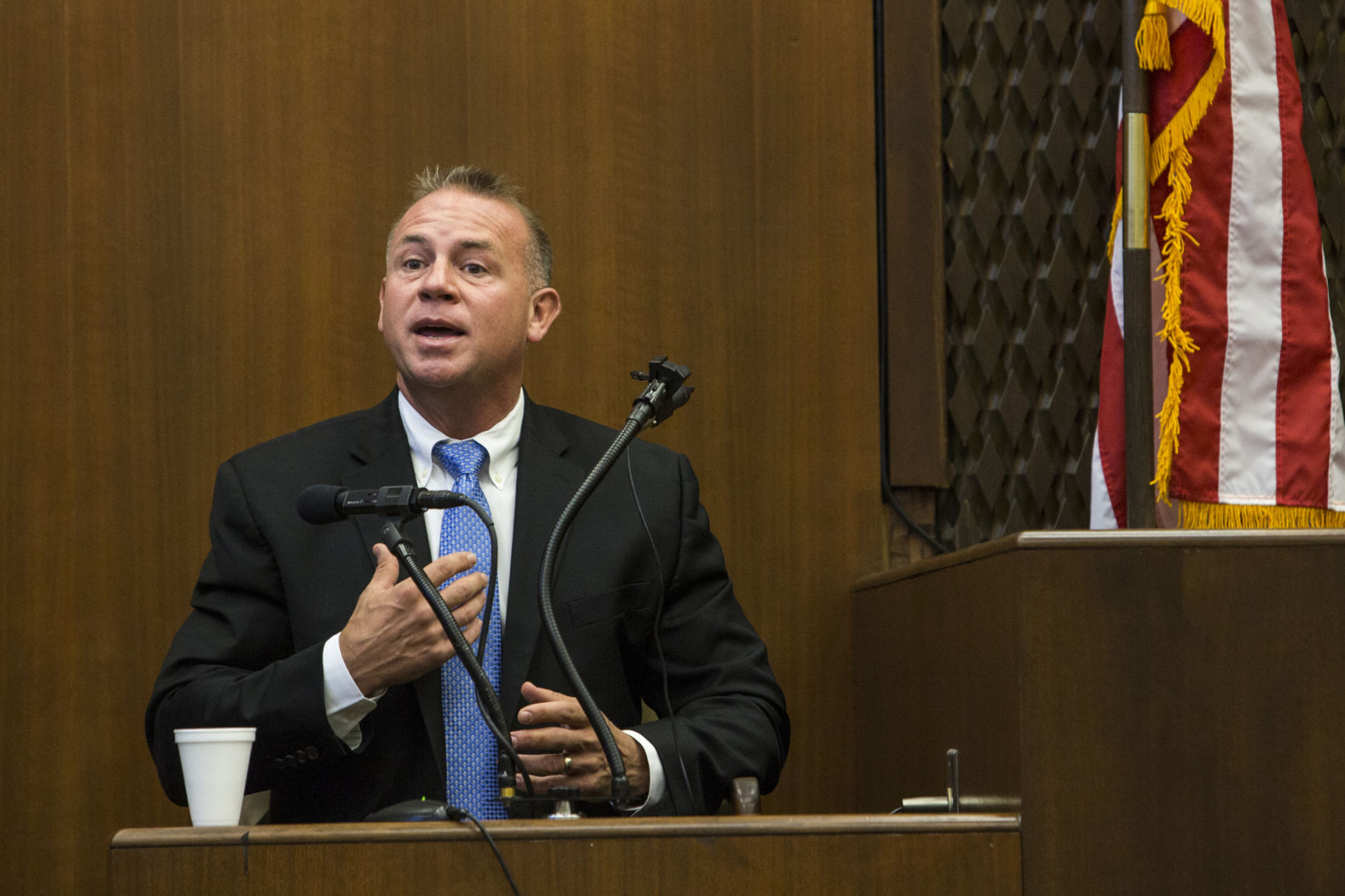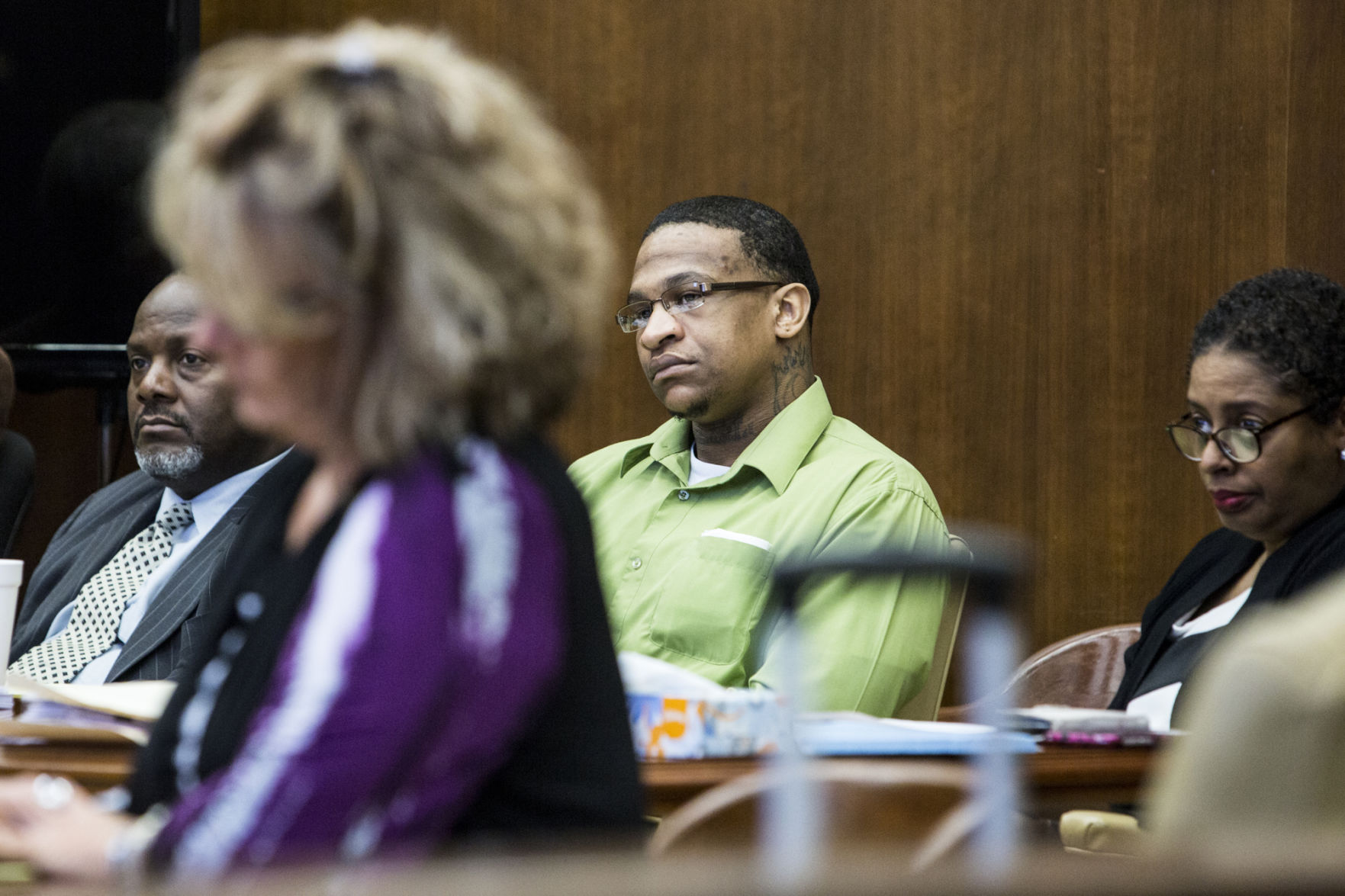BATESVILLE, Miss. (AP) — An intelligence analyst guided a jury Saturday through cellphone data and video footage prosecutors hope will prove their theory that a Mississippi man fatally burned a 19-year-old woman. Paul Rowlett testified in the trial of Quinton
BATESVILLE, Miss. (AP) — An intelligence analyst guided a jury Saturday through cellphone data and video footage prosecutors hope will prove their theory that a Mississippi man fatally burned a 19-year-old woman.
Paul Rowlett testified in the trial of Quinton Tellis, who has pleaded not guilty to capital murder in the death of Jessica Chambers.
Prosecutors theorize Tellis suffocated Chambers during sex in her car near his house on the evening of Dec. 6, 2014, in Courtland, Mississippi. Tellis then drove Chambers’ car to a rural back road, ran to his sister’s house nearby, borrowed her car, stopped at his house to pick up a can of gasoline, and used the ignitable liquid to set Chambers on fire, prosecutors said. A severely burned Chambers was found walking near her burning car. A doctor testified Chambers had third-degree burns on more than 90 percent of her body when she died at a hospital in Memphis, Tennessee, about 60 miles (95 kilometers) north of Courtland.
During early interviews, Tellis told law enforcement agents he only saw Chambers on the morning of the day she died. In another interrogation more than two years later, Tellis acknowledged that Chambers picked him up in her car at about 5:30 p.m. on Dec. 6 and they spent about 1 ½ hours together, according to videotaped interviews played for the jury Friday.
Tellis, 29, did not say he had sex with Chambers on the night she died and has told investigators he does not know who killed her.
Rowlett said he analyzes data as an intelligence specialist for the U.S. Attorney’s Office in Oxford, and was called in to help Panola County prosecutors with their investigation.
He showed the jury a series of maps, photos, videos and other visual aids in an attempt to show Tellis was with Chambers at night. Investigators received loads of data from the cellphones of Chambers and Tellis and gathered surveillance video from a store across the street from Tellis’ home.
Investigators concluded that Tellis and Chambers were together until around 7:30 p.m., Rowlett said. Video footage shows a vehicle that was likely Tellis’ sister’s stopping at Tellis’ house at 7:50 p.m. and staying for about two minutes before heading toward the crime scene.
Tellis has told investigators he kept a 5-gallon container of gasoline in a shed at his house. Prosecutors believe he was driving his sister’s vehicle when he picked up the gas from his shed before setting Chambers on fire.
A smoldering Chambers was discovered by a passing motorist on the rural back road shortly after 8 p.m. and called authorities.
Defense attorney Darla Palmer challenged Rowlett on the reliability of cellphone location data. Rowlett conceded that information from cellphone towers can provide a general location of a device but not an exact location.
“It can be precise, and it can be imprecise,” Rowlett said.
But Rowlett also said investigators did not use cellphone location data alone to pinpoint Chambers’ and Tellis’ location. Instead, agents used the data in combination with video, photos, crime scene evidence, and statements from witnesses and Tellis himself to complete the “puzzle.”
Earlier Saturday, investigator Tim Douglas testified that no one named Eric was tested for DNA evidence in the case, even though Chambers mentioned that name to firefighters who treated her before she died. Douglas said about 10 people named Eric were questioned and cleared, and there was no need to test.
The trial continues Sunday.




